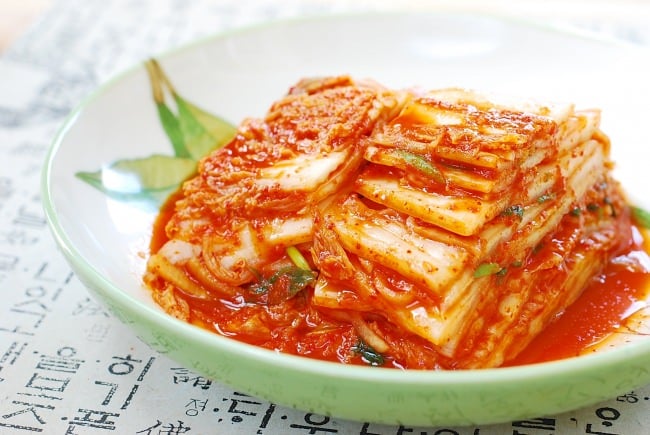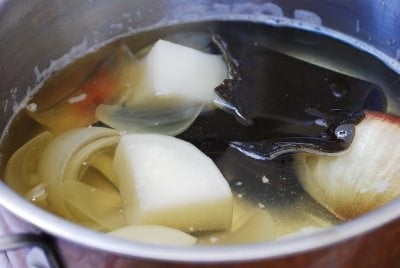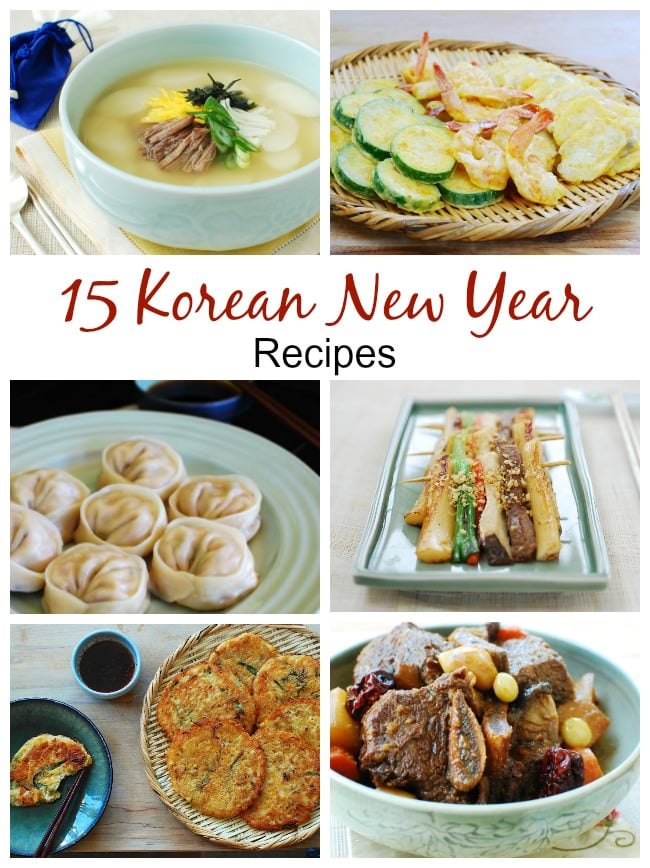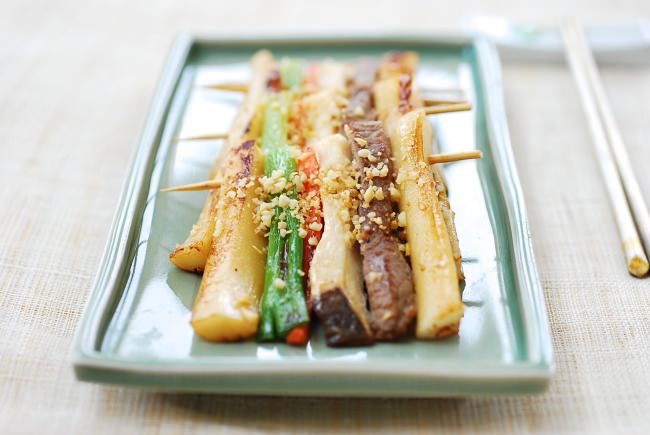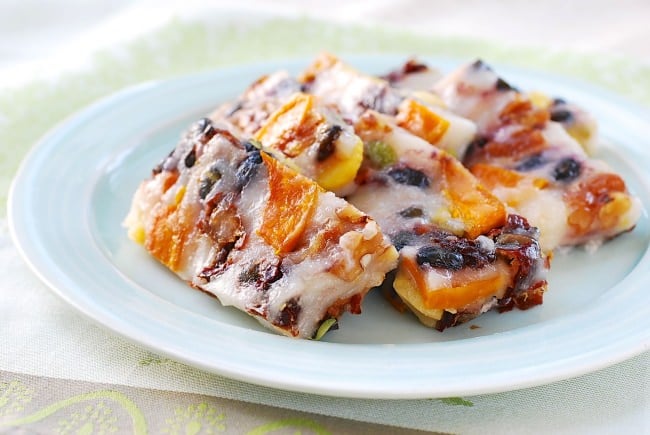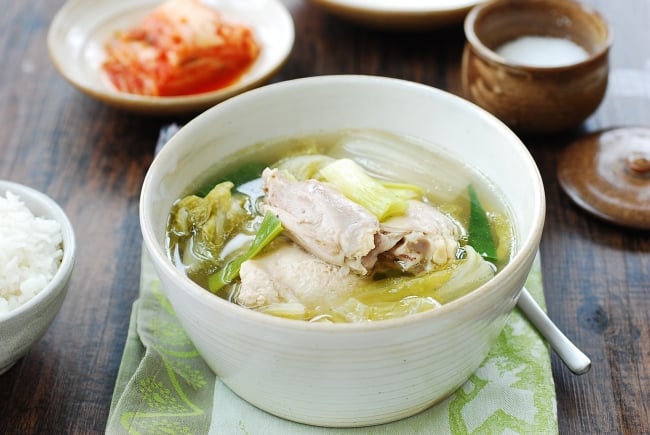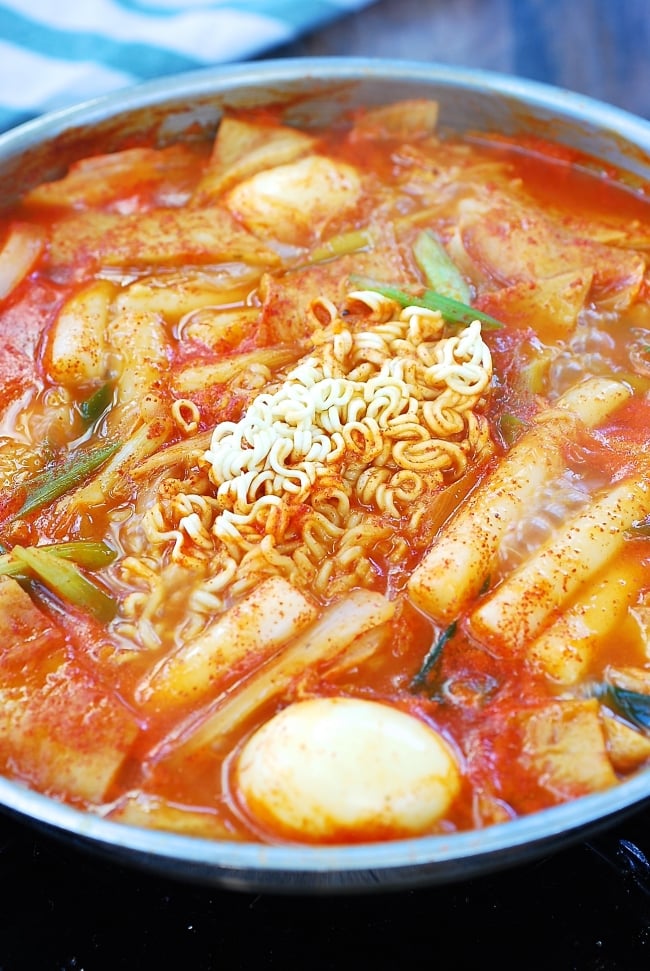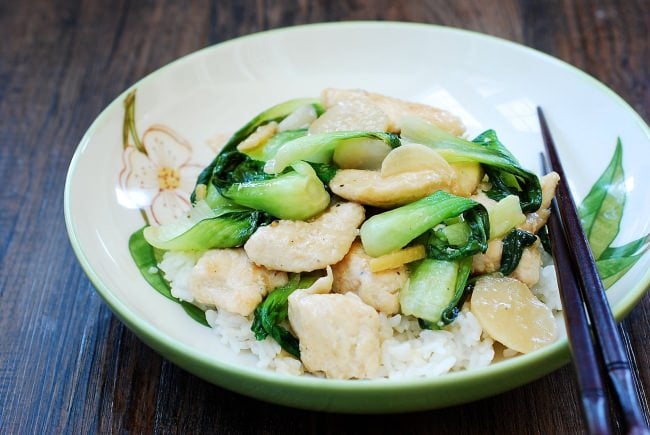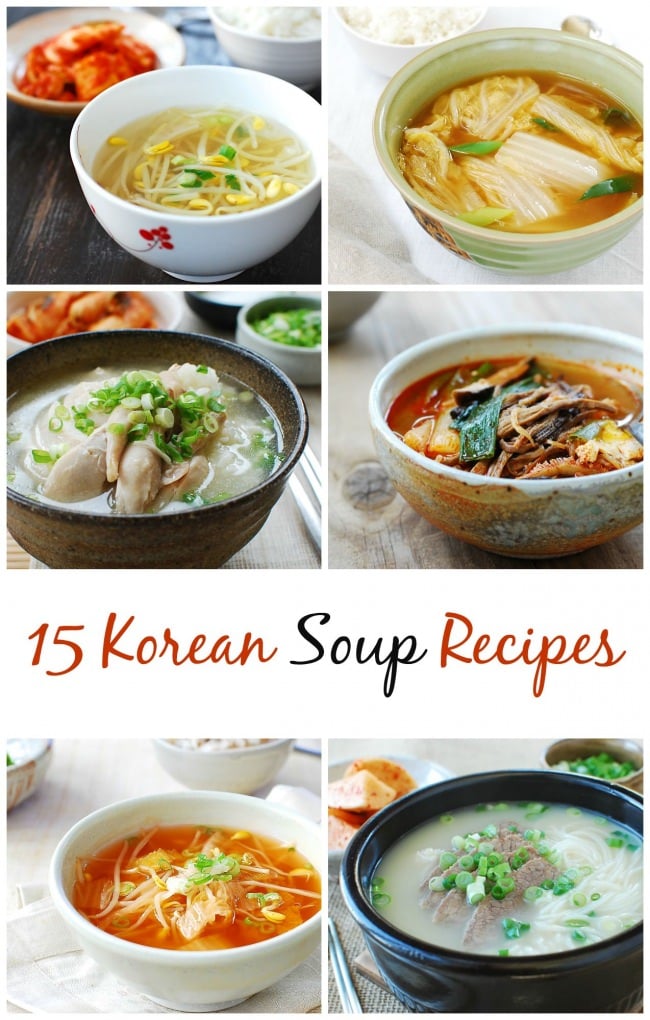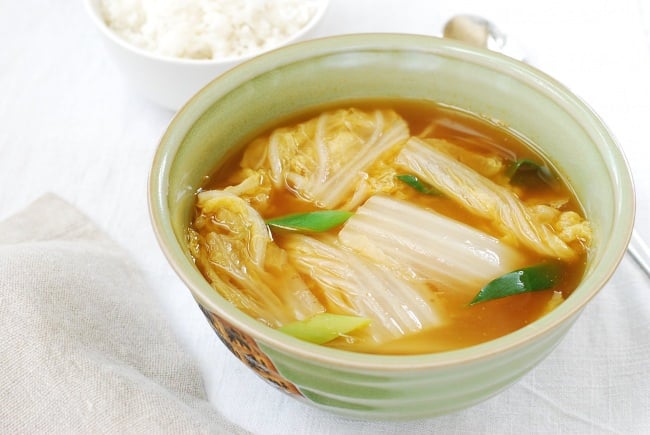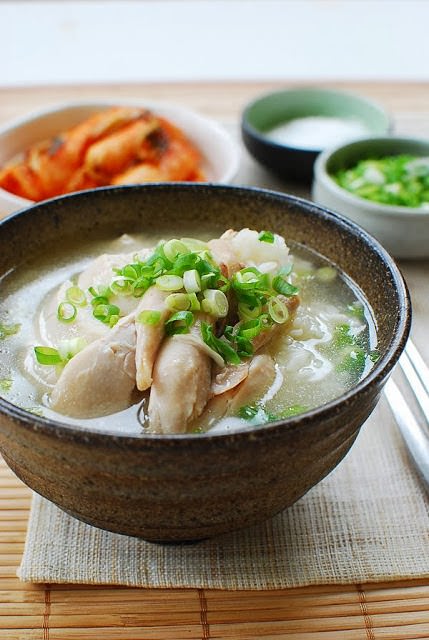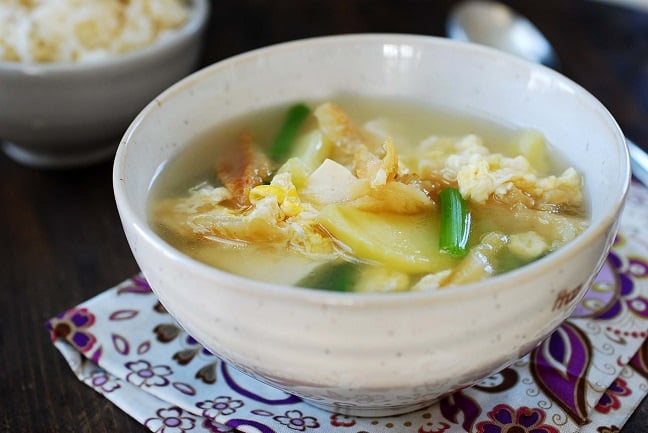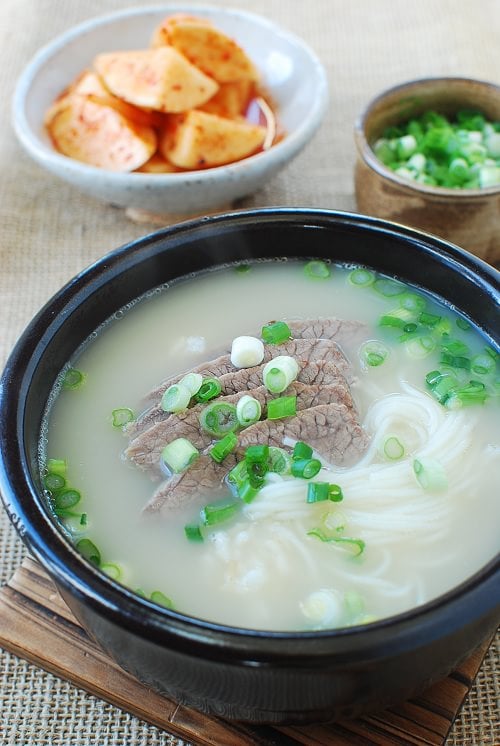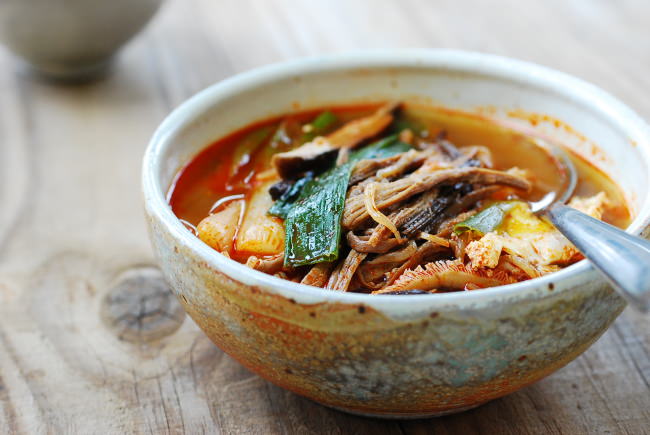
I really think you will love this simple variation of japchae made with soybean sprouts (kongnamul, 콩나물)!
Japchae (잡채) is a Korean dish made with sweet potato starch noodles called dangmyeon (당면). The traditional dish includes thin strips of beef and various vegetables, but there are many variations! Depending on the main ingredient accompanying the noodles, the variations are called buchu (garlic chives) japchae, beoseot (mushroom) japchae, gochu (chili peppers) japchae, ueong (burdock root) japchae, kongnamul (soybean sprouts) japchae, etc.
All you need for kongnamul japchae is soybean sprouts and sweet potato starch noodles, along with a few basic seasoning ingredients. Everything else is optional! I added scallions and a little bit of red bell pepper slices for color. The ratio between the soybean sprouts and the noodles can be flexible.

To make the dish, I cook the soybean sprouts first, remove the bean sprouts and then use the sprout flavored cooking liquid with a little bit of the sauce to cook the noodles. By the time the noodles are cooked, all the liquid will have been absorbed by the noodles. The result is springy noodles that are shiny and flavorful!
For the traditional japchae, Korean cooks typically rinse the noodles in cold water after cooking to stop them from turning soft, but the cooking method in this recipe keeps the noodles springy and shiny without that step.
The rest is easy! Quickly stir fry the noodles with any vegetables you’re adding, the soybean sprouts, and the remaining sauce.

One tip about cooking soybean sprouts — you can cook them either covered or uncovered, but if cooking covered, do not open the lid until the sprouts are cooked, or the raw bean smell will linger even after cooked.
This dish can also be made spicy. Add a teaspoon or two of gochugaru (Korean red chili pepper flakes) to the sauce if you want to add a spicy kick.


- 8 ounces soybean sprouts (kongnamul, 콩나물)
- 4 ounces Korean sweet potato starch noodles (dangmyeon, 당면)
- 1 teaspoon cooking oil
- 2 to 3 scallions, cut into 2 inch pieces
- 1/4 red bell pepper (or 1/2 small carrot), julienned
- 2 tablespoons soy sauce
- 1 tablespoon sugar
- 1 teaspoon minced garlic
- 1 tablespoon Sesame oil
- 1/2 teaspoon Sesame seeds
- pinch pepper
- Boil 2 cups of water in a pan over medium high heat. Add the soybean sprouts and cook for 2 minutes. Flip the sprouts over once, if cooking uncovered, for even cooking. Do not open until done if cooking covered.
![Kongnamul Japchae (Japchae with soybean sprouts]()
- Mix all the sauce ingredients in a small bowl until the sugar is dissolved.
- Remove the soybean sprouts to a bowl, reserving the cooking liquid in the pan. Add 1 teaspoon of cooking oil, 1-1/2 tablespoons of the prepared sauce, and the noodles to the pan.
![Kongnamul Japchae (Japchae with soybean sprouts]()
- Cook the noodles for 6 to 7 minutes until the liquid is almost gone. When the noodles turn soft, cut with kitchen shears into shorter lengths.
![Kongnamul Japchae (Japchae with soybean sprouts]()
- Add the scallions and red pepper slices, and stir fry briefly until the vegetables are slightly wilted.
![Kongnamul Japchae (Japchae with soybean sprouts]()
- Add the soybean sprouts and the remaining sauce. Quickly toss everything until well combined before turning off the heat.
![Kongnamul Japchae (Japchae with soybean sprouts]()
The post Kongnamul Japchae (Soybean Sprout Japchae) appeared first on Korean Bapsang.





